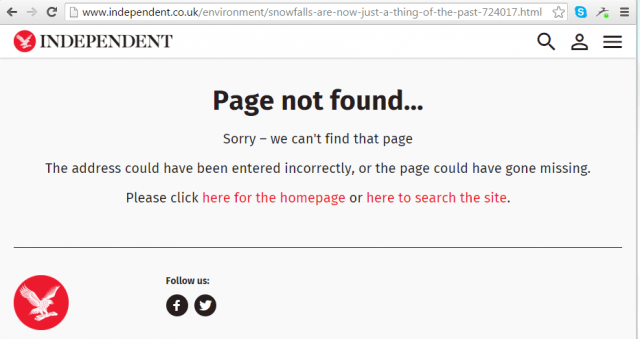AFP |
Diplomats gathering in South Korea Monday will find themselves in the awkward position of vetting and validating a major UN scientific report that underscores the failure of their governments to take stronger action on climate.
The UN special report on global warming of 1.5 degrees Celsius (2.7 degrees Fahrenheit) above preindustrial levels began as a request from the 195 nations that inked the Paris Agreement in 2015. That landmark pact called for capping the rise in global temperature to “well-below” 2C, and invited countries to submit voluntary national plans for reducing greenhouse gas emissions.
To the surprise of many — especially scientists, who had based nearly a decade of research on the assumption that 2C was the politically acceptable guardrail for a climate-safe world — the treaty also called for a good-faith effort to cap warming at the lower threshold.
Many scientists say the goal is feasible on paper, but would require political will and economic transformations that are not on the near-term horizon.
At the same time, countries asked the UN’s climate science authority, the Intergovernmental Panel on Climate Change (IPCC), to detail what a 1.5C world would look like, and how hard it might be to prevent a further rise in temperature.
Three years and many drafts later, the answer has come in the form of a 400-page report — grounded in an assessment of 6,000 peer-reviewed studies — that delivers a stark, double-barrelled message: 1.5C is enough to unleash climate mayhem, and the pathways to avoiding an even hotter world require a swift and complete transformation not just of the global economy, but of society too.
Read more: Climate Change: India rocked by thunder and dust storms
With only one degree Celsius of warming so far, the world has seen a climate-enhanced crescendo of deadly heatwaves, wild fires and floods, along with superstorms swollen by rising seas.
Line-by-line Vetting
“I don’t know how you can possibly read this and find it anything other than wildly alarming,” said Peter Frumhoff, director of science and policy at the Union of Concerned Scientists, a Washington-based research and advocacy group, referring to the draft Summary for Policy Makers.
The UN special report on global warming of 1.5 degrees Celsius (2.7 degrees Fahrenheit) above preindustrial levels began as a request from the 195 nations that inked the Paris Agreement in 2015.
Government representatives — often the same ones in the trenches at UN climate negotiations — will spend the entire week going through the 22-page executive summary, line-by-line. With scientists at their elbow, they will check it against the underlying report and, if the past is any guide, attempt to blunt conclusions deemed inconvenient by their governments.
“Some countries, such as Saudi Arabia, have threatened to be obstructionist,” said one of the report’s authors. China is said to have reservations on the chapters outlining policy options, concerned that some of the measures outlined may be too ambitious. But the joker in the pack is the United States, several delates and observers noted.
Read more: Ten ways climate change can make wildfires worse
“This is the first report coming up for approval since the Trump administration took office,” said Michael Oppenheimer, a professor of geosciences and international affairs at Princeton University, and an IPCC author on a another report-in-progress. “That’s a real wild card.”
US a ‘Wild Card’
There are few clues as to what the United States might say or do in Incheon, which has left a lot of people nervous. “The US could, as they have in the past, support the science,” said one contributing author. “Or they could become obstructionist — maybe Fox News will decide to shine a spotlight on the meeting.”
A State Department spokesperson confirmed to AFP that veteran climate diplomat Trigg Talley will head the US delegation, a development one veteran IPCC author described as “reassuring.”
With only one degree Celsius of warming so far, the world has seen a climate-enhanced crescendo of deadly heatwaves, wild fires and floods, along with superstorms swollen by rising seas.
“Never in the history of the IPCC has there been a report that is so politically charged,” said Henri Waisman, a senior researcher at the Institute for Sustainable Development and International Relations, and one of the report’s 86 authors.
Governments looking for a straightforward answer to the question of whether the 1.5C target can be reached are likely to be disappointed, he added. “The report isn’t going to simply say ‘yes’ or ‘no’,” he told AFP. “Our goal was to put as much information as possible into the hands of policy makers so they can step up to their responsibilities.”
Read more: Regional and business leaders step into the climate breach
Many scientists say the goal is feasible on paper, but would require political will and economic transformations that are not on the near-term horizon.
“In my view, 1.5C stabilisation is extremely difficult if not impossible at this point, while 2C stabilisation is an uphill challenge but doable,” Michael Mann, director of the Earth System Science Center at Pennsylvania State University, told AFP.
© Agence France-Presse














